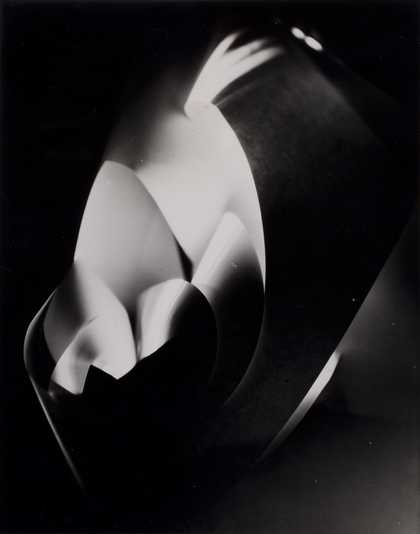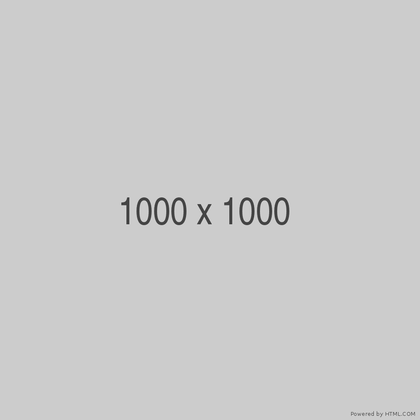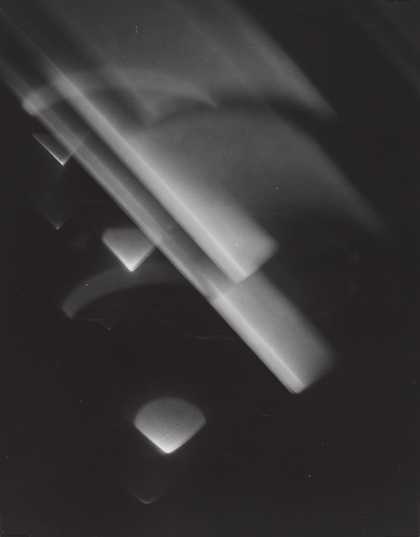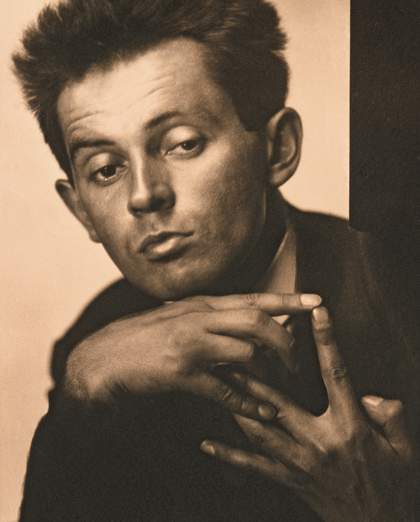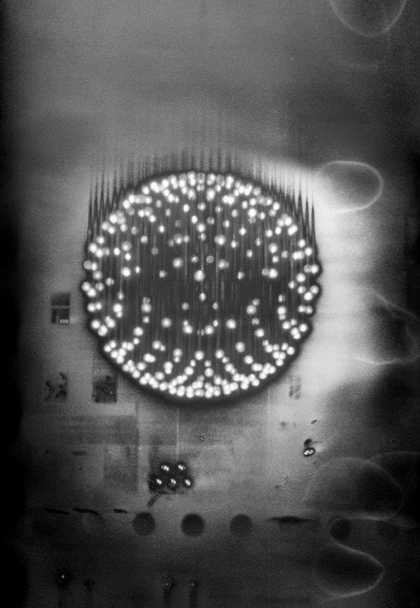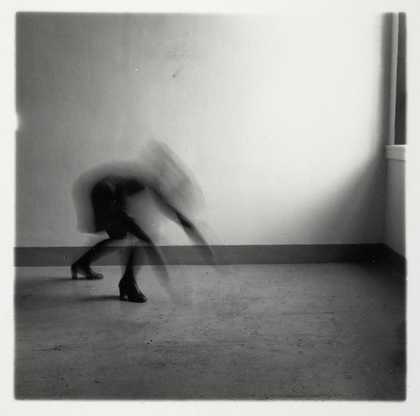
Barbara Kasten in her New York studio, 1983
Photo © Kurt Kilgus
Painting and sculpture are often thought of as major influences on photographic abstraction. The works in Shape of Light, however, make me consider the degree to which this influence may be the other way around. The Bauhaus, established in Germany a century ago, had a profound impact on the direction of photography as a new art form: one of the movement’s prime directives was the exploration of light as a medium. The group’s material experimentation and explorations of light and space instigated new attitudes towards art and design.
László Moholy-Nagy, a Bauhaus master appointed by founding member Walter Gropius, was a prolific creator of photograms, considering them to be the most abstract way of seeing. Using industrial materials in his photograms, he created planar geometric shapes inspired by the constructivists, exploring motion, transparency and reflectivity. Moholy-Nagy’s fascination with the photogram emphasised individual expression and established the photogram as a means towards abstraction for many artists, including me.

Barbara Kasten, Photogenic Painting, Untitled 74/13 1974, cyanotype photogram, 76.2 x 101.6 cm
© Barbara Kasten, courtesy the artist, Thomas Dane Gallery, London and Bortolami, New York
My mentor, Trude Guermonprez, brought Bauhaus textile experimentation with her to California College of Arts (CCA), and that influence guided my work from painting to textiles to photography and sculpture. My work often begins with an exploration of materials, and my initial attraction to photography stemmed from an interest in how the photographic process could provide innovative means to create paintings. The photogram, free from technical restraints and training, offered a direct way to merge a painterly technique with light-sensitive emulsions. The fibreglass window screening I used for the cyanotype Photogenic Painting series 1974–5 was an industrial textile that I first stretched then painted on, before exposing it to sunlight. The result was ephemeral and surreal, even though the material itself was bland and meant for practical purposes. In 1978, inspired by the interdisciplinary experiments of the Bauhaus, I expanded the scale of my photograms by constructing a sculptural assemblage of paper cartons on photo mural paper. Segmented into four panels, painted with oil sticks and then stretched on canvas, the result was a hybrid object – half painting, half photograph.
Throughout my practice and career, I have searched to identify the intrinsic qualities of a material and use them as content for work. An artist’s choice of materials can trigger unexpected interpretations that invoke open responses to life in turn. I discovered a kinship with the many artists in this exhibition who have pursued similar goals to mine. Francis Bruguière examined the pliability of paper to create a fantasy of space in an elegant study of form. I have admired his work since the 1970s when I acquired one of his cut paper photographs. The inherent rigid materiality of the plate glass photographed by Willy Zielke implies an ambiguous monumental structure reminiscent of architecture, which my work often alludes to as well. Having explored fibre sculpture as a graduate student, I relate to the fluidity and malleability of the textiles that Jaroslava Hatláková manipulated into a suggestion of a ripple on still water. Jacques-André Boiffard created photograms using a mysterious liquid substance that appears to grow before our very eyes, creating forms that are echoed by my painted cyanotypes.
The interdependency of shadow and light is the essence of photographic exploration and an inescapable part of the photographic process. I see the play between these two phenomena as basic components of photographic abstraction, with their exchanging roles of solidity and transparency. In my work, shadow transforms the three-dimensional space of my constructions into the two-dimensional surface of the photograph. It is the same magic that Hanaya Kanbee used in 1930 to photograph mysterious subjects, encapsulating them in shadow, suggesting a convoluting journey into space. On the opposite end of the grayscale is the ephemeral light with which Lotte Jacobi traced a mere tinge of shadow, providing only a breath of its presence. Jaromír Funke cast a spotlight upon a simple geometric construction to suggest a formidable architectural structure, while Luigi Veronesi added the dimension of time to his geometric configurations of motion studies made in 1940. All of these photographers understood the power and transformational abilities of light and shadow. The combination creates content by its own presence and is one of the many methods that artists, including myself, employ to create abstraction within photography, a process that requires ‘a subject’.
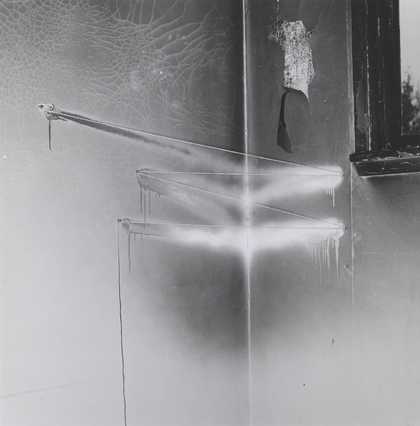
John Divola, 74V13 1974, gelatin silver print on paper, 17.7 x 17.7 cm
© John Divola. Photo © Tate, 2018 / Joe Humphreys. Courtesy Jack Kirkland Collection, Nottingham
In exemplifying how early Bauhaus pedagogy has appeared through generations, my observations here touch upon only a few artists of many. Those early 20th-century artists pushed boundaries that contemporary practitioners now unabashedly erase to produce work that mixes any desirable mediums. Today, photography is used in installations, performance, video and any means of artistic expression that one can imagine.
Barbara Kasten is an artist living and working in Chicago. Works from her Photogenic Painting series are featured in Shape of Light: 100 Years of Photography and Abstract Art at Tate Modern, until 14 October.

